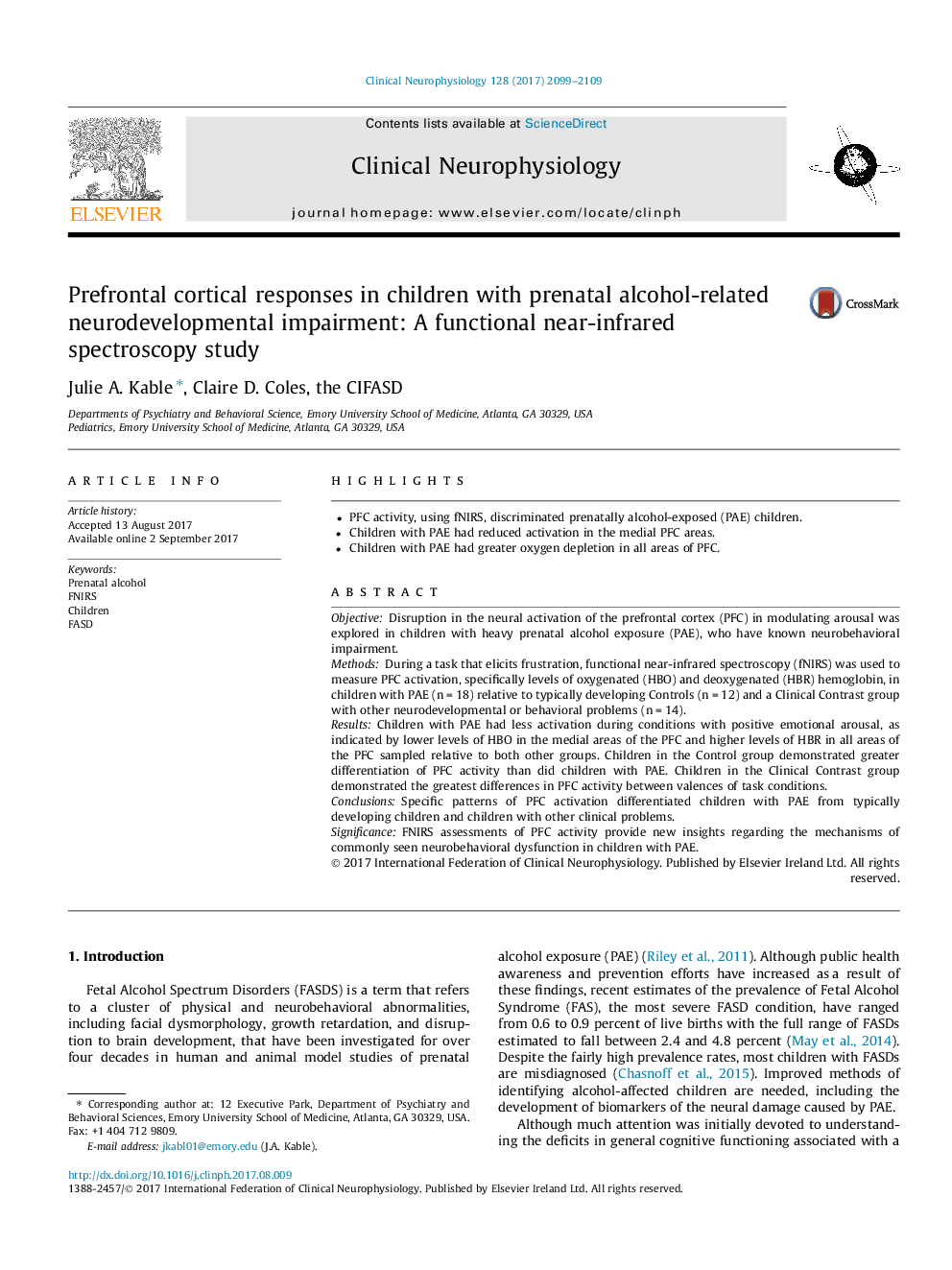| Article ID | Journal | Published Year | Pages | File Type |
|---|---|---|---|---|
| 5627580 | Clinical Neurophysiology | 2017 | 11 Pages |
â¢PFC activity, using fNIRS, discriminated prenatally alcohol-exposed (PAE) children.â¢Children with PAE had reduced activation in the medial PFC areas.â¢Children with PAE had greater oxygen depletion in all areas of PFC.
ObjectiveDisruption in the neural activation of the prefrontal cortex (PFC) in modulating arousal was explored in children with heavy prenatal alcohol exposure (PAE), who have known neurobehavioral impairment.MethodsDuring a task that elicits frustration, functional near-infrared spectroscopy (fNIRS) was used to measure PFC activation, specifically levels of oxygenated (HBO) and deoxygenated (HBR) hemoglobin, in children with PAE (n = 18) relative to typically developing Controls (n = 12) and a Clinical Contrast group with other neurodevelopmental or behavioral problems (n = 14).ResultsChildren with PAE had less activation during conditions with positive emotional arousal, as indicated by lower levels of HBO in the medial areas of the PFC and higher levels of HBR in all areas of the PFC sampled relative to both other groups. Children in the Control group demonstrated greater differentiation of PFC activity than did children with PAE. Children in the Clinical Contrast group demonstrated the greatest differences in PFC activity between valences of task conditions.ConclusionsSpecific patterns of PFC activation differentiated children with PAE from typically developing children and children with other clinical problems.SignificanceFNIRS assessments of PFC activity provide new insights regarding the mechanisms of commonly seen neurobehavioral dysfunction in children with PAE.
